 Blackout poetry is when you take a piece of text from a book, newspaper, or magazine and blackout words to create your very own poetry
Blackout poetry is when you take a piece of text from a book, newspaper, or magazine and blackout words to create your very own poetry
Spark your thinking!
1. Set up your language arts mini spark recording page: #47: Blackout Poetry
2. A blackout poem is when a poet takes a marker (usually black marker/Sharpie) to already established text–like in a newspaper–and starts redacting words until a poem is formed. The key thing with a blacko ut poem is that the text AND redacted text form a sort of visual poem. When only the chosen words are visible, a brand new story is created! Define blackout poetry on your recording page.
ut poem is that the text AND redacted text form a sort of visual poem. When only the chosen words are visible, a brand new story is created! Define blackout poetry on your recording page.
3. Blackout poems can be created using the pages of old books or even articles cut from yesterday’s newspaper. Using the pages of an existing text, blackout poets isolate then piece together single words or short phrases from these texts to create lyrical masterpieces. Where can you find a page to use for a blackout poem?
 4. Blackout poems, as I’m sure you can imagine, run the gamut from absurd to sublime because all of the words are already there on the page, but the randomness is all part of the fun! We truly believe a poem lives within the words and lines of any page, and encourage you to uncover it. Creating a blackout poem involves steps that are all about deconstruction and then reconstruction. Look up both of those words and write the meaning on your recording page.
4. Blackout poems, as I’m sure you can imagine, run the gamut from absurd to sublime because all of the words are already there on the page, but the randomness is all part of the fun! We truly believe a poem lives within the words and lines of any page, and encourage you to uncover it. Creating a blackout poem involves steps that are all about deconstruction and then reconstruction. Look up both of those words and write the meaning on your recording page. 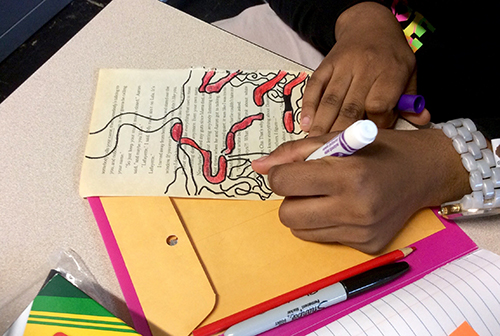
5. Get started on your poem. Talk with your teacher about finding a book page/newspaper/magazine page to use for this project. Gather other art supplies-pencil, markers, and so on.
Step 1: Scan (or cut out) the page or article first before reading it completely. Keep an eye out for an anchor word as you scan. An anchor word is one word on the page that stands out to you because it is packed and loaded with meaning and significance. Starting with an anchor word is important because it helps you to imagine possible themes and topics for your poem.
Step 2: Now read the page of text in its entirety. Use a pencil to lightly circle any words that connect to the anchor word and resonate with you. Resonant words might be expressive or evocative, but for whatever reason, these are the words on the page that stick with you. Avoid circling more than three words in a row.
Step 3: List all of the circled words on a separate piece of paper. List the words in the order that they appear on the page of text from top to bottom, left to right. The words you use for the final poem will remain in this order so it doesn’t confuse the reader.
Step 4: Select words, without changing their order on the list, and piece them together to create the lines of a poem. You can eliminate parts of words, especially any endings, if it helps to keep the meaning of the poem clear. Try different possibilities for your poem before selecting the lines for your final poem. If you are stuck during this step, return back to the original page of text. The right word you are searching for could be there waiting for you.
Step 5: Return to the page of text and circle only the words you selected for the final poem. Remember to also erase the circles around any words you will not be using.
Step 6: Add an illustration or design to the page of text that connects to your poem. Be very careful not to draw over the circled words you selected for your final poem!
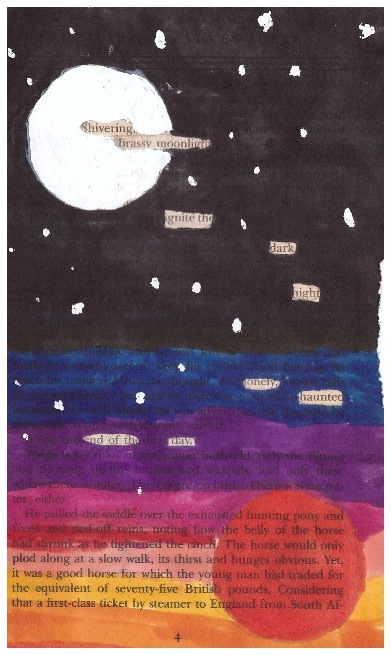
6. Share your language arts mini spark recording page and and your poem with your teacher/EY coordinator.
Lesson idea from: https://www.scholastic.com/teachers/blog-posts/john-depasquale/blackout-poetry/
Check out the blackout poetry badge at the EY website. You can use your poem from this mini spark as task 6 on your badge if you want!

 WordArt.com is an online word cloud generator that enables you to create amazing and unique word clouds with ease.
WordArt.com is an online word cloud generator that enables you to create amazing and unique word clouds with ease.
 A bio poem is a simple poem that provides biographical information about a person, historial figure, or literary character.
A bio poem is a simple poem that provides biographical information about a person, historial figure, or literary character.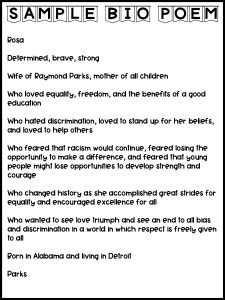
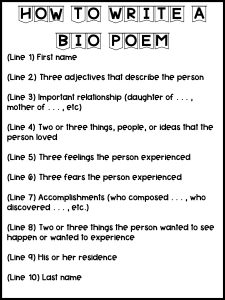

 This mini spark has you wring all about cooking up something in the kitchen!
This mini spark has you wring all about cooking up something in the kitchen!

 It is fun to learn how to spell new words. This mini spark is a great way to find new words to practice. Happy Spelling!
It is fun to learn how to spell new words. This mini spark is a great way to find new words to practice. Happy Spelling! The purpose of news report writing is to inform an audience. A news report is a story that is currently happening or that just happened. Writing a news report is easy if you write about the subject in a style that is clear, concise, and active. One of the best practices for writers is to follow is using the Who, What, Where, When,Why, and How of a story.
The purpose of news report writing is to inform an audience. A news report is a story that is currently happening or that just happened. Writing a news report is easy if you write about the subject in a style that is clear, concise, and active. One of the best practices for writers is to follow is using the Who, What, Where, When,Why, and How of a story.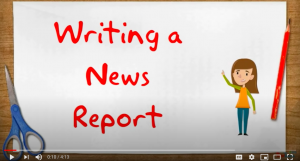
 The primary purpose of descriptive writing is to describe a person, place or thing in such a way that a picture is formed in the reader’s mind. Capturing an event through descriptive writing involves paying close attention to the details by using all of your five senses.
The primary purpose of descriptive writing is to describe a person, place or thing in such a way that a picture is formed in the reader’s mind. Capturing an event through descriptive writing involves paying close attention to the details by using all of your five senses. For this mini-spark, we will focus on the literary device Flashback. Flashbacks in literature are when the narrator goes back in time for a specific scene or chapter in order to give more context for the story. Oftentimes, we see flashbacks in books where the past greatly impacts the present or as a way to start a story off on an interesting note.
For this mini-spark, we will focus on the literary device Flashback. Flashbacks in literature are when the narrator goes back in time for a specific scene or chapter in order to give more context for the story. Oftentimes, we see flashbacks in books where the past greatly impacts the present or as a way to start a story off on an interesting note.
 Blackout poetry is when you take a piece of text from a book, newspaper, or magazine and blackout words to create your very own poetry
Blackout poetry is when you take a piece of text from a book, newspaper, or magazine and blackout words to create your very own poetry ut poem is that the text AND redacted text form a sort of visual poem. When only the chosen words are visible, a brand new story is created! Define blackout poetry on your recording page.
ut poem is that the text AND redacted text form a sort of visual poem. When only the chosen words are visible, a brand new story is created! Define blackout poetry on your recording page. 4. Blackout poems, as I’m sure you can imagine, run the gamut from absurd to sublime because all of the words are already there on the page, but the randomness is all part of the fun! We truly believe a poem lives within the words and lines of any page, and encourage you to uncover it. Creating a blackout poem involves steps that are all about deconstruction and then reconstruction. Look up both of those words and write the meaning on your recording page.
4. Blackout poems, as I’m sure you can imagine, run the gamut from absurd to sublime because all of the words are already there on the page, but the randomness is all part of the fun! We truly believe a poem lives within the words and lines of any page, and encourage you to uncover it. Creating a blackout poem involves steps that are all about deconstruction and then reconstruction. Look up both of those words and write the meaning on your recording page. 

